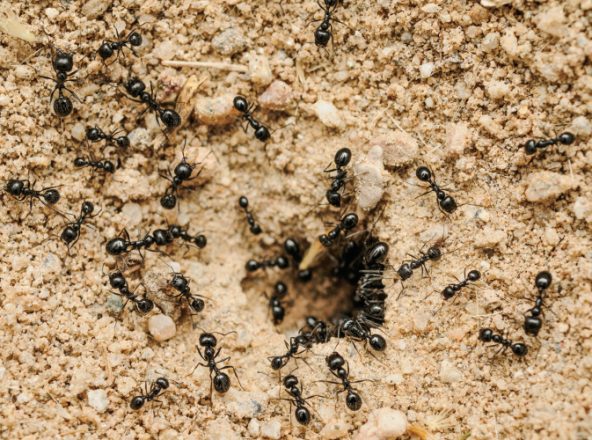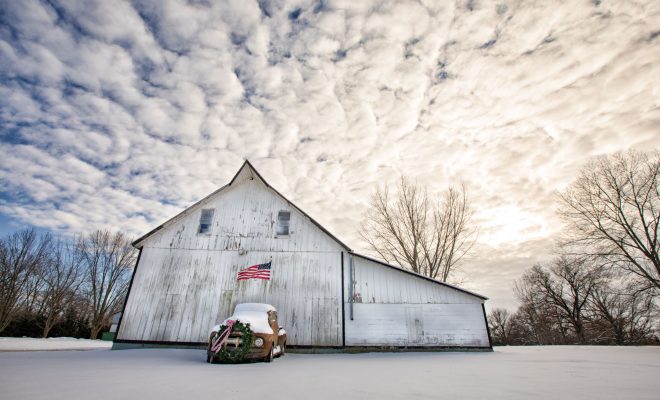
How do they do it? How does something so small make it through the subfreezing temperatures of an Illinois winter? They enter into “diapause,” a period of inactivity in insects characterized by a cessation of growth. Shorter hours of daylight trigger diapause, at which time the insect’s metabolic rate drops to one-tenth, allowing it to survive on stored body fat. For other insects, diapause signals the production of alcohols which act as antifreeze, protecting their cells from damaging ice crystals.
Where Insects Go in the Winter
Insects endure winter in one of their life stages, many as eggs. Bagworm eggs spend winter in protective woven sacks, hanging from a branch.
Others survive winter as adults. Notice the south side of your house in autumn, and you will find congregations of Asian, multicolored lady beetles searching for nooks and crannies, or even better, a path inside. Meanwhile, our native ladybugs mass under plant debris and into the base of ornamental grasses.
Grubs overwinter in the larval stage, insulated by a protective layer of soil and turf or mulch overhead. June bugs and Japanese beetles spend the winter in this stage. Butterflies and moths survive as pupae in chrysalises and cocoons, respectively.
Warm temperatures in spring alert the insects to transition out of diapause and commence the next phase of their life cycle. To prevent premature awakening during short warm spells in winter, insects require a prolonged stretch of cold before warm temperatures break diapause.
Winter weather affects the survival rate of insects. Extreme cold for long periods, which causes the soil to freeze deeper than some grubs can dig, depletes their numbers. Temperature fluctuations, snow cover and whether their diapause site is disturbed also influence survival rates.
Are Ants Really All That Bad?
Speaking of insects, let’s talk about ants. I think most people, me included, characterize them as pests. Surprisingly, ants belong in the beneficial insect category. They aerate the soil, fertilize it and disperse plant seeds.
Similar to earthworms, ants rototill through the soil, bringing needed oxygen down to the roots. At the same time, they distribute nutrients from their waste. Ants also clean up dead things, changing them into fertilizer.
Ants disperse some flower seeds during their daily activities. Bleeding heart, Dutchman’s breeches, trout lily and violets evolved to bloom and set seed in spring and early summer to coincide with times of increased ant activity.
Seeds from these plants contain fat bodies to attract ants, which they carry back to their nests. Their larvae eat the fat, leaving the seeds intact to germinate in a nutrient-rich waste heap, while staying protected from predators and competition from other plants.
How do ants spend the winter? In autumn, they bulk up on fat by eating a lot of food. As diapause nears, they cluster together in groups around the queen, thus preserving heat and protecting the future. With the cessation of activity, the hill opening fills in and closes off until the warmth of spring triggers increased activity.
Ask Master Gardener Jan Phipps
Q: I planted two shrub roses this spring. Do they have to be covered up for the winter like regular roses?
A: No, shrub roses are tough plants and will do just fine. Occasionally, during severely cold winters, anything above the snow line will die, but the roots will survive with new growth appearing in spring.
Q: We’re cutting down a diseased spruce tree. The top still looks good. Can we use it as our Christmas tree?
A: Sure. The needles will be very pokey and stiff, but it should be fine in the house.




